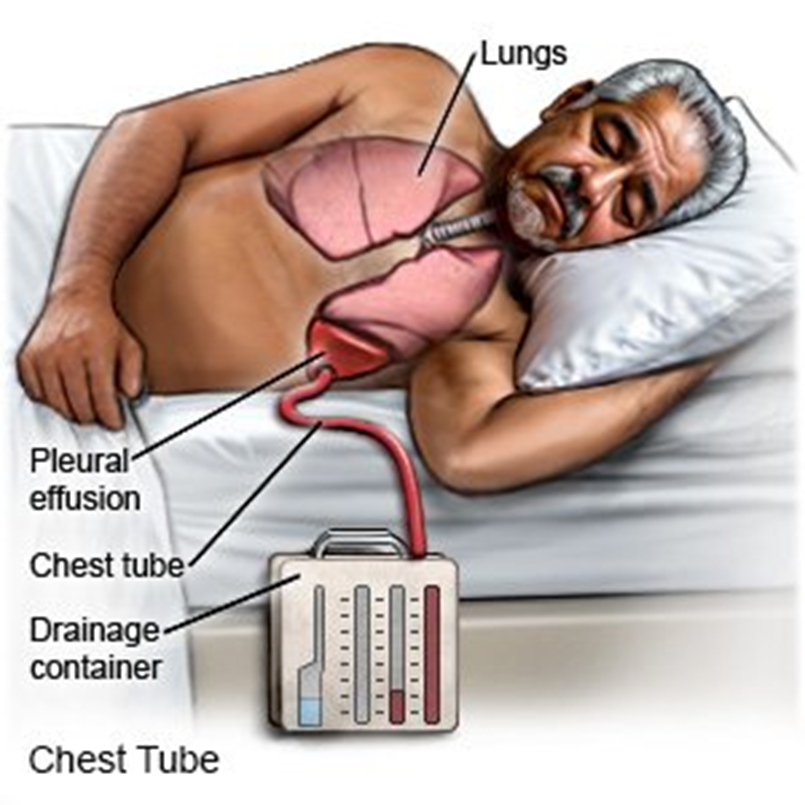The nurse is planning care for a client diagnosed with SIADH. Which of the following would be included in the plan of care? Select all that apply.
Administer 0.45% NS at 50 mL/hr
Obtain daily weight
Maintain seizure precautions
Administer 3% saline as ordered
Encourage fluid intake
Correct Answer : B,C,D
Choice A Reason:
Administering 0.45% NS (normal saline) at 50 mL/hr is not appropriate for a client with SIADH. This hypotonic solution can exacerbate the condition by increasing the water retention and further diluting the serum sodium levels, worsening hyponatremia. Instead, fluid restriction and hypertonic saline (such as 3% saline) are typically used to manage SIADH.
Choice B Reason:
Obtaining daily weight is crucial in managing SIADH. Daily weights help monitor fluid retention and detect any sudden changes in body weight, which can indicate worsening fluid overload or effective treatment. Accurate weight measurements are essential for assessing the client’s fluid balance and guiding treatment decisions.
Choice C Reason:
Maintaining seizure precautions is necessary for clients with SIADH because severe hyponatremia can lead to neurological symptoms, including seizures. Implementing seizure precautions helps ensure the client’s safety and allows for prompt intervention if a seizure occurs.
Choice D Reason:
Administering 3% saline as ordered is appropriate for treating severe hyponatremia in SIADH. Hypertonic saline helps increase serum sodium levels and reduce the risk of neurological complications. It must be administered carefully and under close monitoring to avoid rapid correction of sodium levels, which can lead to osmotic demyelination syndrome.
Choice E Reason:
Encouraging fluid intake is not appropriate for clients with SIADH. Fluid restriction is a key component of managing SIADH to prevent further dilution of serum sodium levels. Encouraging fluid intake would counteract this goal and worsen the client’s condition.
Nursing Test Bank
Naxlex Comprehensive Predictor Exams
Related Questions
Correct Answer is D
Explanation
Choice A Reason:
Malfunction of the alarm button is unlikely to be the cause of increased peak airway pressure. The alarm is designed to alert the nurse to a problem with the ventilator or the patient’s airway, not to malfunction itself. Therefore, this is not the first thing the nurse should assess.
Choice B Reason:
A cut or slice in the tubing from the ventilator could cause a loss of pressure or air leak, but it would not typically result in increased peak airway pressure. Instead, it would likely cause a decrease in pressure and potentially trigger a different alarm.
Choice C Reason:
Higher than normal endotracheal cuff pressure can contribute to increased peak airway pressure. However, it is not the most immediate concern compared to a kink in the tubing, which can completely obstruct airflow and rapidly compromise the patient’s ventilation.
Choice D Reason:
A kink in the ventilator tubing is a common and immediate cause of increased peak airway pressure. It obstructs the flow of air, leading to a buildup of pressure in the system. This is the first thing the nurse should assess and correct to ensure the patient is receiving adequate ventilation.

Correct Answer is A
Explanation
Choice A Reason:
Occasional palpitations are a common symptom of supraventricular tachycardia (SVT) with a non-sustained ventricular response. Palpitations are sensations of a rapid, fluttering, or pounding heartbeat, which occur due to the irregular and fast heart rate characteristic of SVT. These palpitations can be intermittent and may vary in intensity, often causing discomfort and anxiety in patients.
Choice B Reason:
Weakness can be associated with SVT, but it is not as specific or common as palpitations. Weakness may occur due to the reduced cardiac output and decreased perfusion to the muscles during episodes of rapid heart rate. However, it is not the primary symptom that nurses would anticipate in patients with SVT.
Choice C Reason:
Shortness of breath is another symptom that can occur with SVT, especially during prolonged episodes. The rapid heart rate can lead to decreased efficiency in blood circulation, causing the patient to feel breathless. While shortness of breath is a significant symptom, palpitations are more directly associated with the diagnosis of SVT.
Whether you are a student looking to ace your exams or a practicing nurse seeking to enhance your expertise , our nursing education contents will empower you with the confidence and competence to make a difference in the lives of patients and become a respected leader in the healthcare field.
Visit Naxlex, invest in your future and unlock endless possibilities with our unparalleled nursing education contents today
Report Wrong Answer on the Current Question
Do you disagree with the answer? If yes, what is your expected answer? Explain.
Kindly be descriptive with the issue you are facing.
